North of Cannes lies Grasse, renowned as the world capital of perfumes, where numerous fragrance companies call home. A sanctuary away from the bustling crowds of the French Riviera, Grasse invites tourists to delve into the rich history of perfume factories. Here, you can explore traditional perfumeries, acquire the latest scents, or even make your own fragrance in a private perfume workshop.
A decade ago, during my first visit to Grasse, I took a factory tour at Galimard, a perfumer with roots dating back to 1747. As the end of the tour, I couldn’t resist and purchased several bottles of Galimard perfumes. Since that day, every time I apply the fragrance, I’m transported back to that sun-kissed day in Grasse, evoking the timeless scent of Provence and recalling my inaugural journey to this beautiful region with my beloved husband.
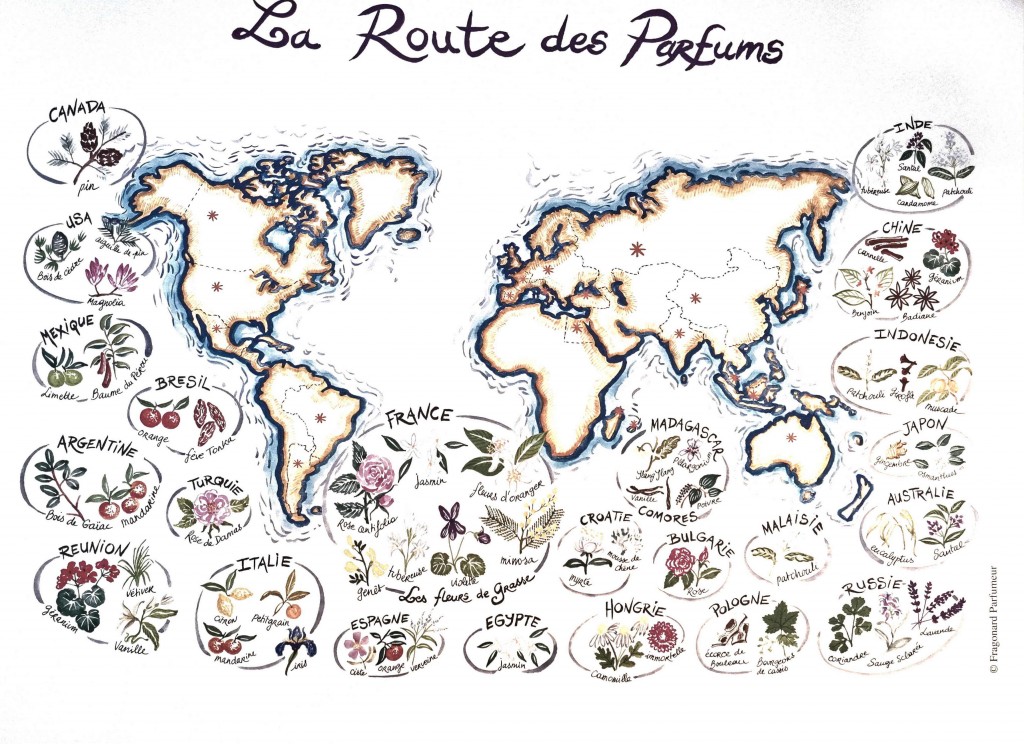
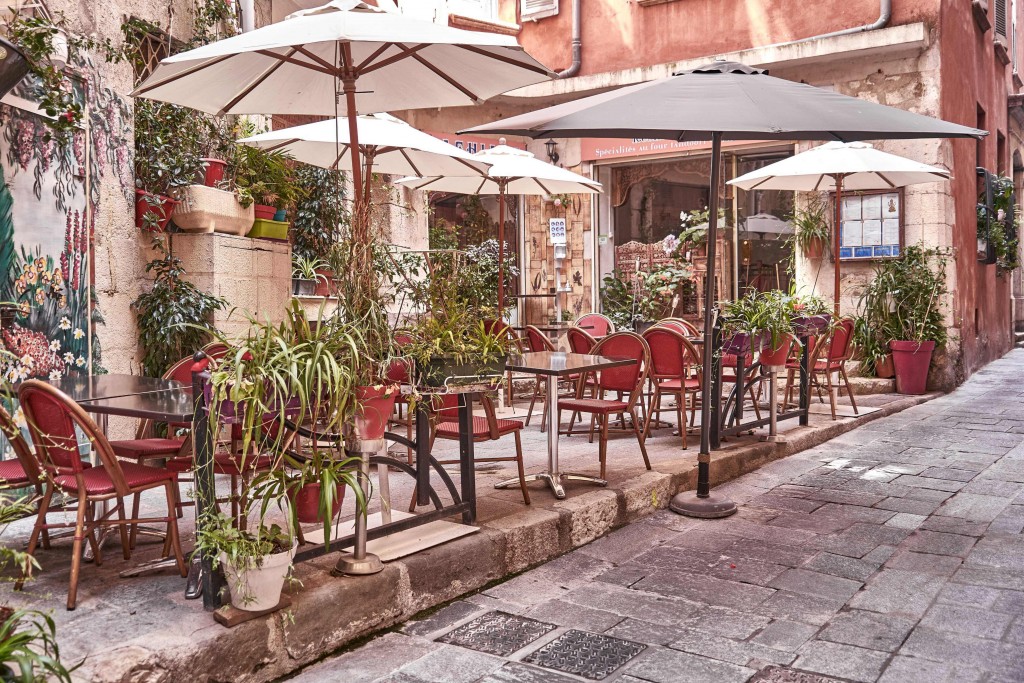
I could not wait to visit the world capital of perfumes again and explore its newest offerings. After enjoying several days on the French Riviera as part of our two-week Southern France road trip, meandering through picturesque hilltop villages, my family and I enthusiastically agreed to make a return trip to Grasse. This time around, we ventured to both the historic Fragonard factory and its contemporary counterpart, the Grasse Factory of Flowers. Our perfume route was carefully planned as follows:
- Fragonard Historical Factory Tour
- Perfume products
- Create own perfumes
- The Flower Factory (La Fabrique des Fleurs)
- Grasse, the world capital of perfumes
Fragonard Historical Factory Tour
On the upper level of the Fragonard historic factory at 20 Boulevard Fragonard, 06130 Grasse, you’ll find a perfume museum and a salesroom. The tour through the factory begins on the lower floor, where dedicated employees craft a limited number of perfumes and soaps in the production rooms.
The historic factory offers insights into the art of perfume-making. Key production areas include the distillery room, bottling room, maceration and filtering room, and the soap workshop. As we explored these spaces, we gained an insider’s view of the traditional perfume-making process, witnessing the transformation of raw materials into the final packaged products. The use of various machines, from copper stills to those in the soap workshops, provided a glimpse into the historical techniques and working conditions.
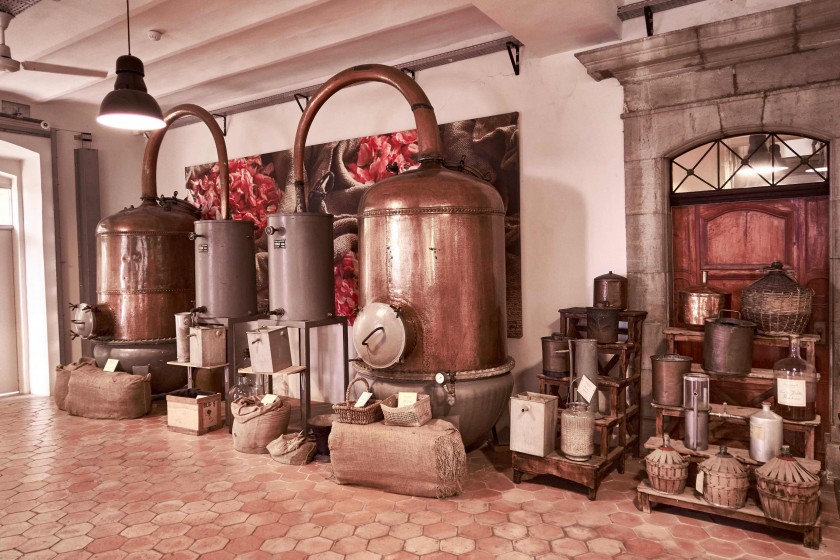
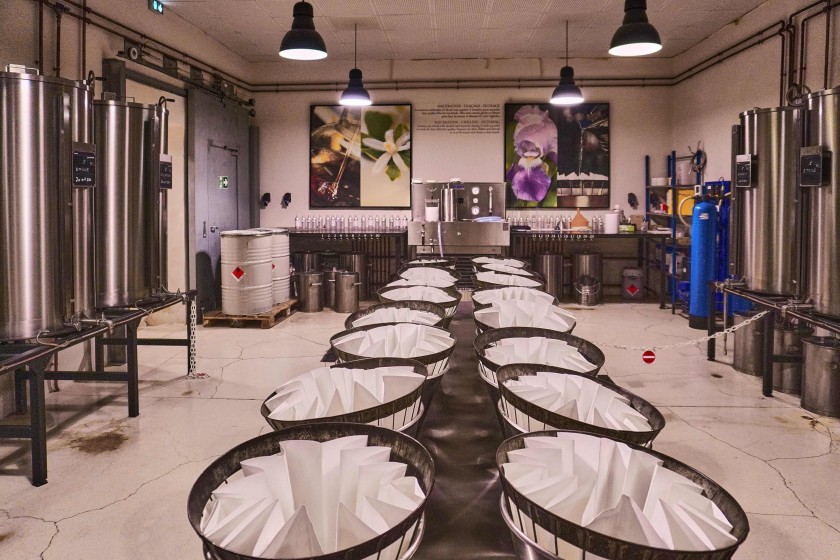
Perfume products
At the end of the tour, our guide led us into the colourful salesroom. Here, we were introduced to the latest additions to the fragrance collection. The Belle Cherie Perfume, a symphony of scents, entices with top notes of tangerine and star fruit, middle notes of jasmine, heliotrope, and lily-of-the-valley, and a lingering base note of sandalwood, tonka bean, and vanilla. And Belle de Nuit, with its rich blend of flowers and fruit, wrapped in a velvety musk undertone, caught my attention as well. Unable to resist, I decided to purchase two generous 120ml bottles, each promising a lasting romantic aroma.
The soaps in the quintessential colours of Provence, caught my eye. A particularly adorable find was the solid perfume encased in small metal boxes in beautiful designs. The temptation of these exquisite aromas and visually appealing products proved irresistible, prompting us to fill our shopping basket once again with more products, including soaps and other cosmetics.
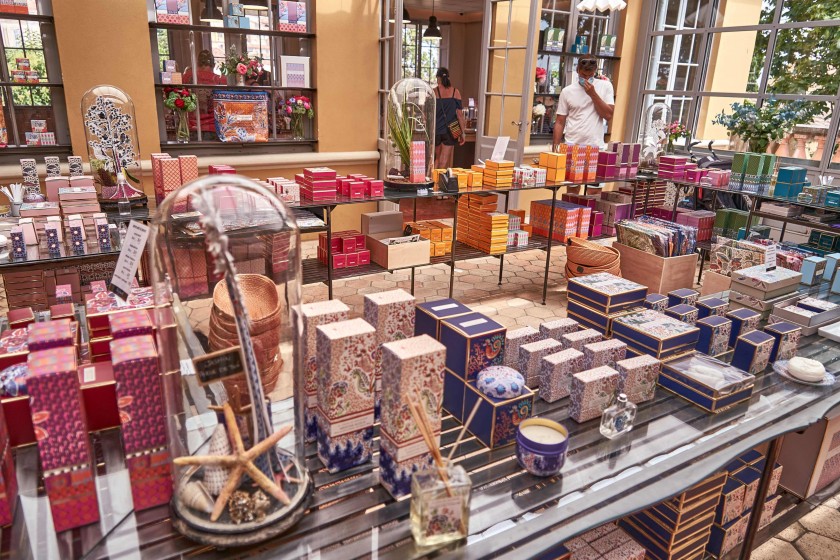
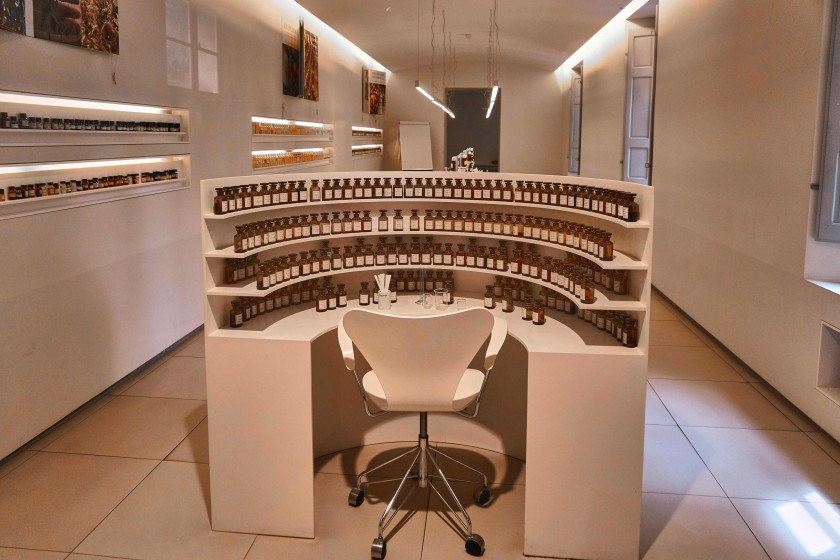
Create own perfumes
If you fancy making your own perfume, there are fun workshops for that – even kids can join in! When you finish, you get to take home the perfume you create. We thought making our own perfume would be so interesting. Even though we might not use the perfume every day, having this special memory from our trip sounds pretty cool. We tried to sign up for a perfume-making workshop that day, but it didn’t work out. Nevertheless, it just gave us a good reason to go back and try again!
The Flower Factory (La Fabrique des Fleurs)
Located on the outskirts of Grasse, La Fabrique des Fleurs (Les 4 Chemins, Route de Cannes, 06130 Grasse) has a stunning garden and neat rows of plants dedicated to making exquisite perfumes. Since its opening in 1986, this modern factory utilises cutting-edge machinery for creating and packaging various products right on the premises.
The plants sourced globally forms the foundation for these fragrances. A wall map showcases the diverse origins of flowers and plants used in extracting their essence. Fragonard Perfume relies on a variety of flowers such as Rose, Jasmine, Orange blossom, Lavender, and Tuberose, among others. While some blooms are cultivated worldwide, Fragonard also uses some flowers handpicked in the fields around Grasse.
Fragonard’s meticulous selection process emphasizes quality, originality, and the extraction method, from delicately handpicking blossoms to transforming them into precious essences. For instance, producing just one kilo of Rose oil, often known as the Queen of essential oils, demands a whopping four tons of roses. It’s no surprise that rose oil is one of the most valuable essences in the collection.
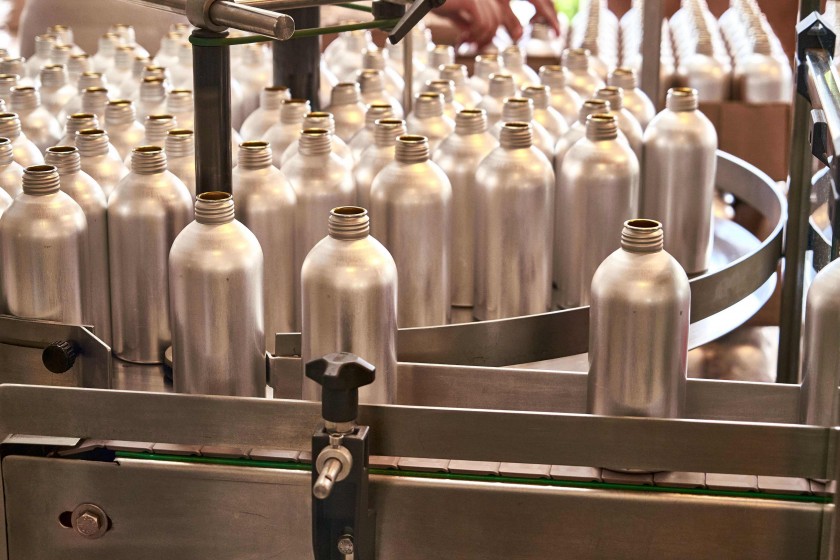
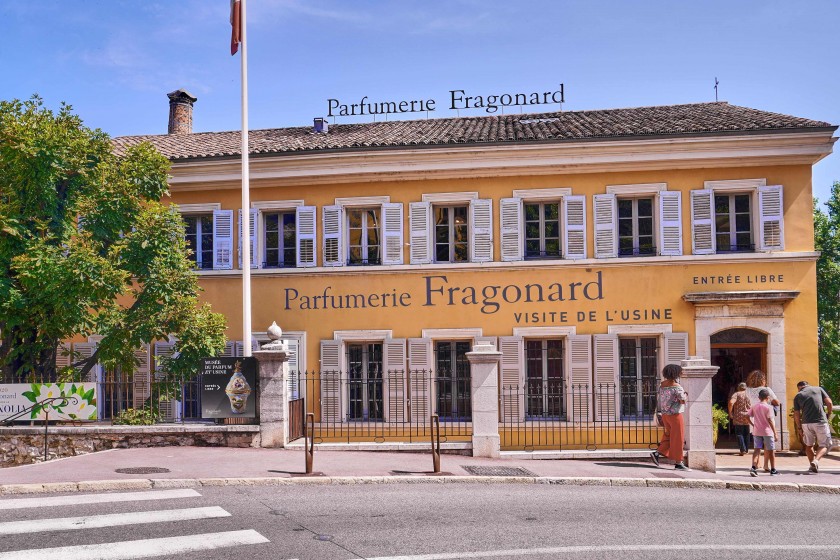
Grasse, the world capital of perfumes
Once upon a time, Grasse wasn’t always synonymous with delightful fragrances. In the medieval era, it thrived as a hub for leather tanning. However, the issue arose as the leather emitted an unpleasant odour that didn’t quite align with the elegance of wearing leather gloves. In a stroke of genius, a tanner in Grasse devised the idea of infusing scents into the leather gloves.
Surprisingly, the fragranced leather quickly gained favour with the Royal Court and high society, thus brought a worldwide reputation to Grasse. However, as the leather industry faced challenges like high taxes and competition from Nice, the production of scented leather came to a halt in the seventeenth century. Despite this decline, Grasse earned a new title—the world capital of perfumes—thanks to its exceptional and rare scents that lingered through time.
Fragonard, Galimard, and Molinard—names that strangely rhyme—are renowned perfume houses graciously opening their factories to the public. While a factory tour provides a swift glimpse into perfume production, the true historical essence can be unearthed at the International Perfume Museum. Here, a collection of over 2,500 objects displays the origins of perfume.
Wandering through the old town of Grasse feels like stepping into a picture-perfect postcard. Admittedly, when compared to some places in southern France, Grasse may appear a bit weathered in certain corners. Strolling down the main shopping street, we encountered an art installation of pink umbrellas. These whimsical umbrellas painted the ground in a soft pink twilight, blocking the dazzling summer sunlight.
The old centre buzzes with activity, dominated by artisan shops, antique dealers, and clothing stores that weave together the fabric of the town’s character. I discovered some exquisite perfume shops, each promising a fragrant journey through Grasse’s scented heritage.


Travel tips for wisiting the world capital of perfumes
Where to stay
The hotels listed below are situated in the center of Grasse and offer competitive rates:
Parking
- The Indigo CRESP car park is conveniently located just opposite the Garlimard old factory. If you’re planning to explore Grasse, this car park is a convenient option.
- Additionally, Garlimard’s new factory provides parking spaces right in front of the entrance.
How to get there
Grasse is conveniently accessible from Nice by bus, train, or car.
- Board Bus LER 31 at Nice Gare Routière, and the journey takes approximately one hour.
- Alternatively, you can opt for a train from Nice, which takes around one hour and eleven minutes to reach Grasse.
- If you prefer driving, follow the A8 and then switch to D6185, and you can reach Grasse in about 40 minutes by car.



